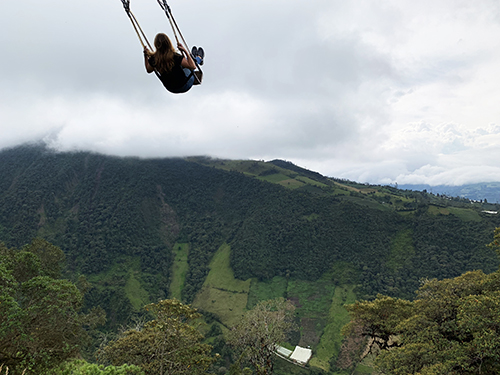


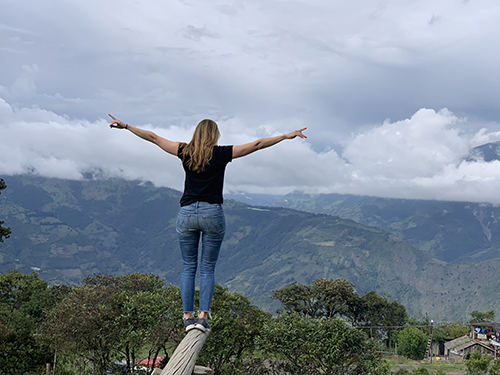

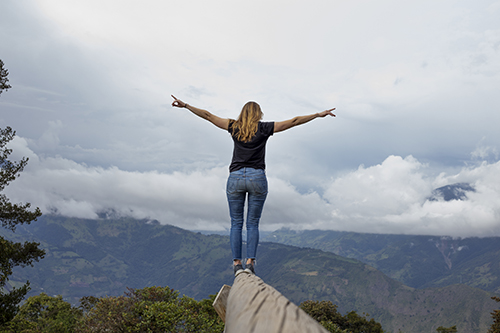

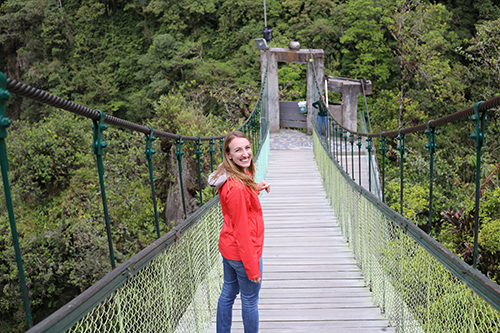

it's 40k kilometers around the world's circumference








We are generally strong hikers, or so we like to think, but on this trek we held a consistent spot in the back of the pack. The destination was the journey, and we were in no rush to leave the trail behind us. We were on a two-day hike through the Llanganates National Park, dressed in wellies with the imminent threat of rain that never came.
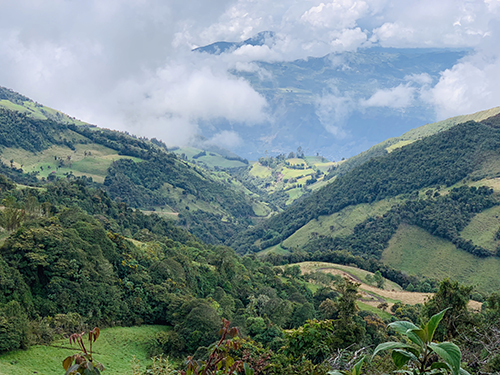

One guide led the way, the other tailed. Andrew, in his persistent habit to make fast friends everywhere he goes, began conversing with Juan Carlo. Juan Carlo steadied every flower I spotted for Andrew to photograph on his iPhone. He pulled fruits and plants from the ground to share with us – mint, gooseberries, babaco. We laughed as we compared the $.10 price of an avocado in Ecuador to the $2.00 price of an avocado in California. You could almost see the pain on Juan Carlo’s face when we told him an avocado may be closer to $4.00 on the East Coast, so we didn’t even broach the subject of avocado toast. Our favorites were the mora berries. They grew in abundance, naturally and farmed, and were shipped across Ecuador to make jugo naturales and vino.
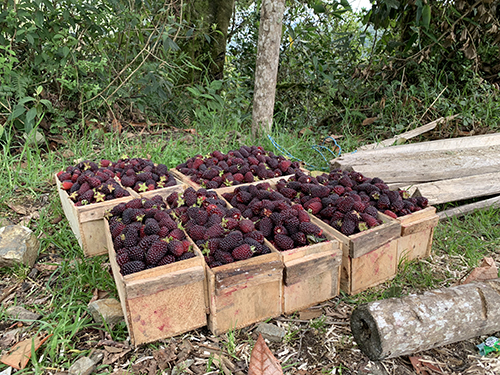
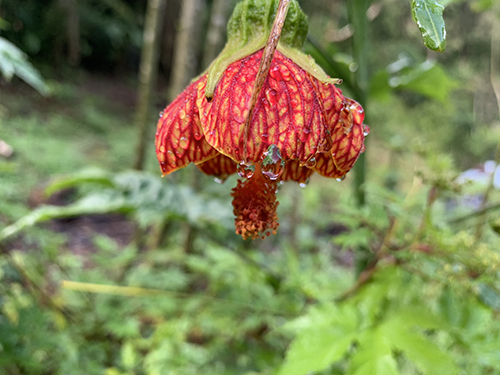
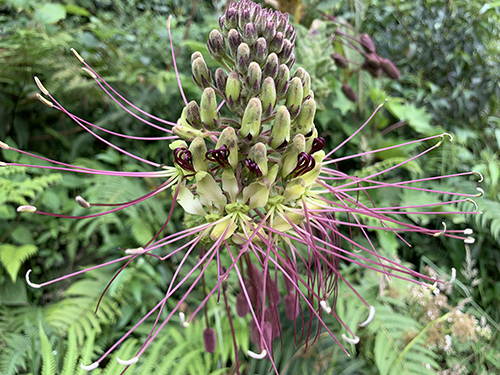
Juan Carlo saw his family friend on the path, an older gentleman who owned a farm large enough to house fruit and livestock. Arnaldo was carrying a machete, and excitedly abided by Andrew’s request to look strong for a photo.
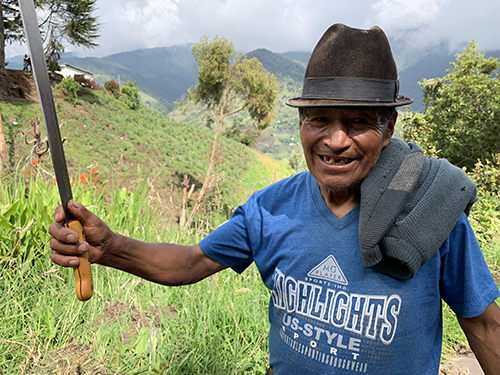

Before sunset we arrived at our camp, a covered flat in the middle of the park where our guides had squeezed together ten tents. The land was owned by a family who farmed trout, so as promised, we fished for our dinner in a pond containing hundreds of trucha. The family got to work, skinning and deboning to create an Ecuadorian feast for the group of us. We ended the night by dipping marshmallows in moonshine to watch them be engulfed by flames over the hot blaze of our campfire, with the rain that had held off pouring onto the tin roofs.

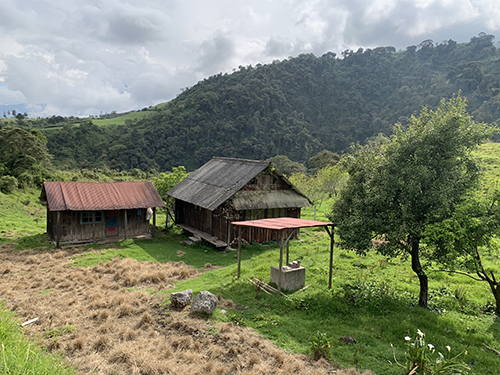
And the next day, we began again.
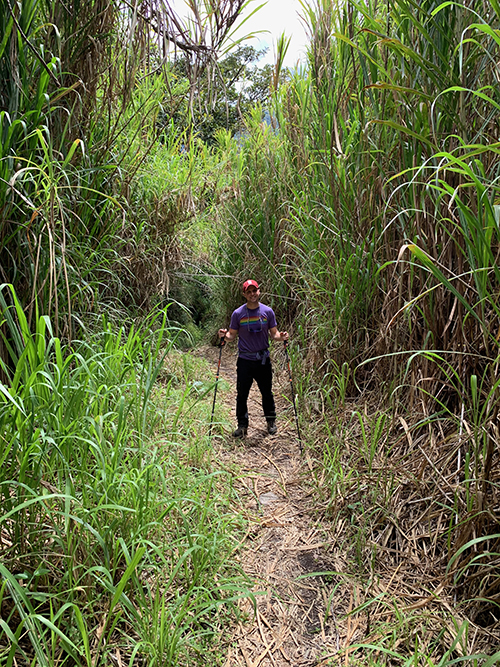
The city of Banos, Ecuador is known for its thrills, including some that just seem silly and nauseating like putting yourself in a ball that rocks like a pendulum while spinning. From the menu of activities, Lindsey and I choose canyoning not fully knowing what to expect yet still having confidence we’d love it. And like any good adventure, it starts by putting on all sorts of gear. We have booties, wet suits, helmets, harnesses, carabiners and more.
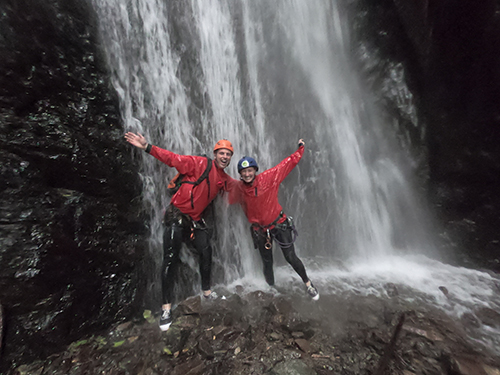
We know we’ll be repelling down five waterfalls, a measure by which I try to control my anxiety levels as we go. Heights aren’t exactly my thing, but when being pelted by a strong waterfall and controlling my descent by feeding rope through closed hands, at least I have some things to keep my mind off of the 3-story tall waterfall. With that, I can report that by waterfall number 5, I felt much more confident, but I’m pretty sure I was still gripping the rope roughly 10x stronger than I needed to. All of my muscles are sure to be sore from this one.
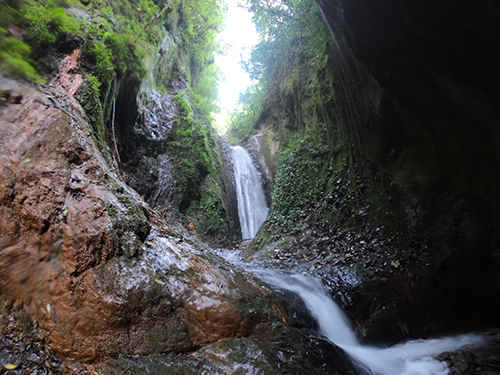
Throughout the adventure, Lindsey chooses to be afraid during the times when I’m not. We take turns. She checks and rechecks every piece of gear we put on. Takes a while, and I’m not sure it makes her feel too much better, but it is something to keep us busy. By the time we get to the top of the waterfalls, however, Lindsey settles into her role making me feel better about what we are about to do. She is able to zip down most of the waterfalls and even graciously captures me in action as it takes me about twice as long to get down. Thanks Linds!
The views from the Napo River are of the same jungle we trekked through yesterday, but this new perspective makes them seem even wilder. The species of trees and plants easily number in the tens of thousands, and the texture that such diversity paints along the banks of the river is other worldly. At times we find ourselves lost in our raft games led by our guide, George of the Jungle, a.k.a. Jorge de la selva. These games include getting stuck on rocks, surfing, spinning in circles, being human hood ornaments and more. At other times, we navigate exhilarating rapids. And then at others, we pause, and we get to look around, take in our surroundings, and try to absorb as much as we can, not including inhaling the water through the rapids.
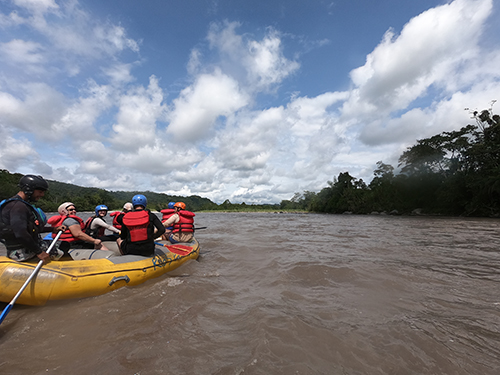
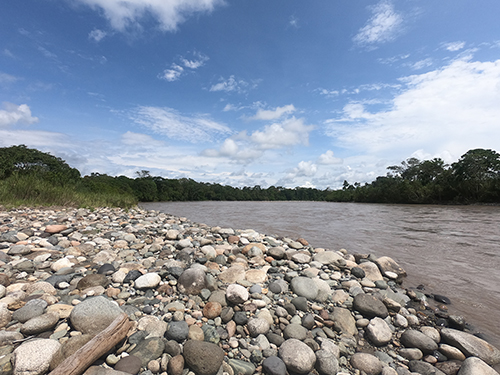
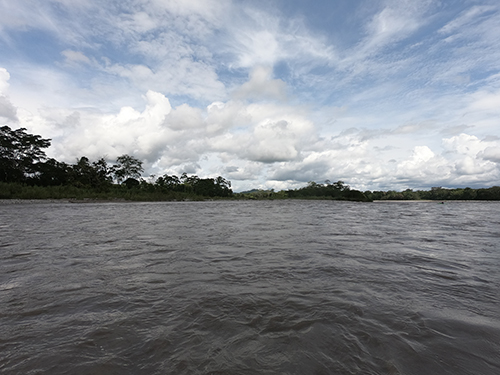
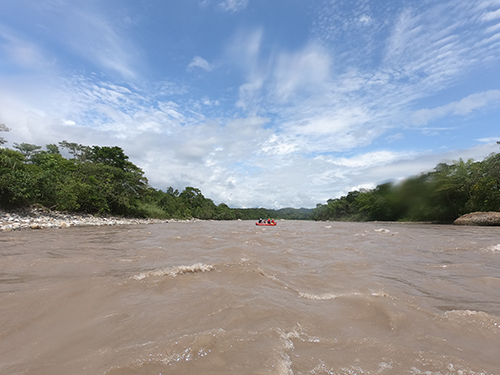
To set the scene, our first full day in Ecuador is in the Napo Province on the edge of the Amazon jungle.
Pushing away Jurassic leaves, we walk over rooted rocky paths through a humid rain forest where we hear the sounds of water overhead but because of a dense canopy, none is really felt. At first glance, the hike’s excitement comes from dodging “bullet” ants whose bites sting for up to 24 hours and admiring vines that are perfect monkey ladders. The path is a bit slippery which challenges my balance now and again, and I find myself running into spider webs seemingly none with spiders attached. Once we get down to a slow-moving stream, our nature walk quickly becomes more of an Amazonian trek.
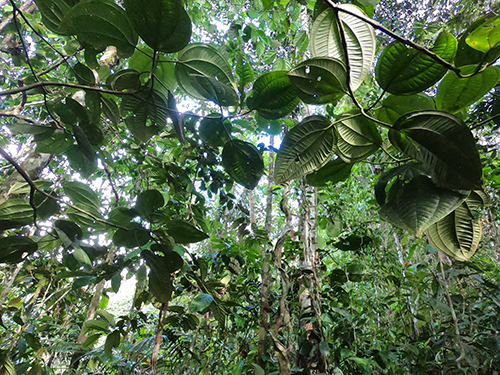
The so-called wellies that we were given are starting to make more sense. We walk through the calf-high stream and suddenly stop when Jose, our guide, comes to a halt. It’s a baby viper snake.
Jose finds a long stick, splits the end into a fork, and traps the snake’s head in the “y”. Not sure exactly what his plan is as he wrangles the snake with his stick in one hand while wielding a machete in the other. After about 10 seconds of chaos, the snake wriggles its way out of Jose’s hold and starts swimming downstream. I learn that when a frightened viper swims, it keeps its head above water creating a very intimidating s-shape as it goes. It finds a fallen tree trunk and climbs up, but not too high.
As it sits there watching the path, Jose stands between the snake and us hikers while we tip-toe around. Luckily, we’ve learned that we have a full 2 hours to get to a hospital after being bitten before we’d have to amputate a limb. So, worst case scenario, we’re probably screwed. The guide’s sweat seems only to be from the weather and not the stress, but all of us are holding our breaths nonetheless. We remain on the lookout for the rest of the hike, but are pleased not to be greeted by any other slithering reptiles.
Next on the tour, we approach caves of bats. While I’m enjoying my full Bruce Wayne awakening moment, I find Lindsey in a fetal position far back on the trail. Apparently, Lindsey suffers from chiroptophobia. I thought we’d shared our phobias before marriage, but I guess we continue to learn more about each other every day. Marriage truly is a gift.
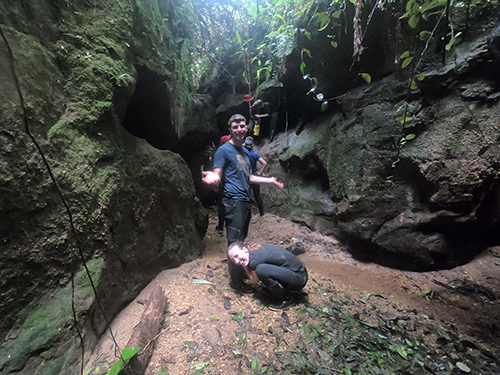
I manage to only get slammed into by two bats, one of which comes in with quite some force. So much so that it ricochets back towards Lindsey who ducks just in time; actually, I think she was down the whole time, but so goes the story. Lindsey, from her squatted position, avoids all contact from these creatures. Jose tells us repeatedly that these are just fruit buts, but that still doesn’t help alleviate Lindsey’s fear that they’re human flesh-eating nightmares.
And if the final phase of the hike wasn’t going to be difficult enough, we need to now shimmy up a crease between 2 shear rocks keeping a look out for the blind bats just waiting to poop on us. With our feet pressed on one rock and our back against another, we make slow and steady movement upwards. And because of my healthy fear of heights, I psych myself up to conquer this, but frighteningly our trip-mate right just ahead falls from over 7 feet up. After a slow-motion fall, I hold my breath waiting to assess the damage. She jumps right up with spirits still very high. But my adrenaline is now at code red. I try to slow my breath as this moment isn’t about me, it’s about her. Luckily, besides a couple bruises she’s actually totally fine. I’m not convinced if I attempt the same fall, I would get the same fate.
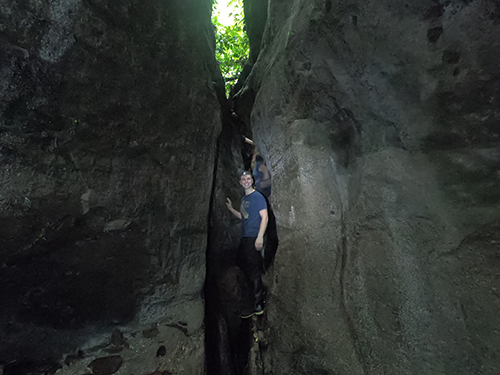
Without looking too far down for fear of falling or too far up for risk of getting bat poop in my eye, I just keep making progress. Relieved when we get to the top, this is just the first 20 feet of shimmying, and we have another half mile before reaching solid footing.
We survive, the viper survives, the bats survive, and as we wrap up our first full day in Ecuador, we gain a whole new appreciation for the Amazon.
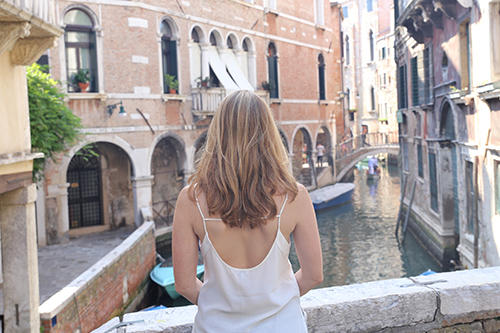
I’ve never been much of a history buff. The past already happened, irrelevant beyond memorization for exams. But Venice? Venice captivated.
We arrived by private boat, speeding through the ocean then slowing to the 5mph speed limit to grace the Grand Canal. Our hotel entrance was unabashedly grand, a contrast to our departure by foot where we were greeted by alleys so narrow you could barely see the sky. We both had a fear stricken moment wondering if all of Venice would be this claustrophobic, but then the alley opened to a street with a corner café. We eagerly got lost, taking in the beauty of a crumbling city, covered in salt from the sea. Venice felt special right from the beginning.
The next morning, we navigated the streets, leaving twice as early as Google advised, to meet Lorenza Smith. Our tour guide for the morning was a Venetian, author of Venice: Art & History, and professor in New York – overqualified for our Day in the Life in the Renaissance agenda. The general content of the tour I was sure I’d heard in Latin class long ago, but this was different. This tour brought the city to life for us, the magic we’d sensed served to us in stories of the most opulent and enduring Empire ever built.
It’s comforting to believe that history is in the past, that the terrible or foolish or inane things that happened were because people were unevolved, unsophisticated, animalistic. But in Venice, the likenesses to today were undeniable, right down to the beauty routines. Venetian women would spread their hair out on a wide-brimmed hat, mixing concoctions to lighten it in much the same way as my friends and I used to spray Sun-In into our hair in the summer in the hopes of developing blonde highlights.
Venice was spectacular. It was a living museum full of new life, bodies from around the world, just as it had been in Venice many centuries before.
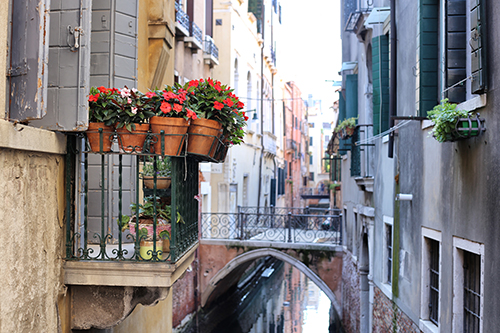
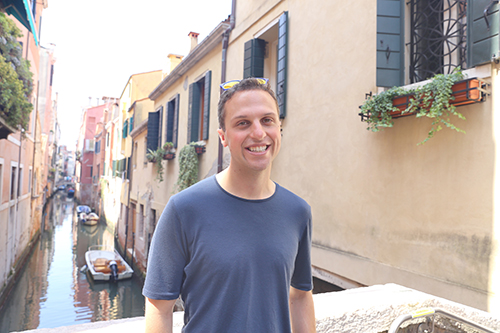
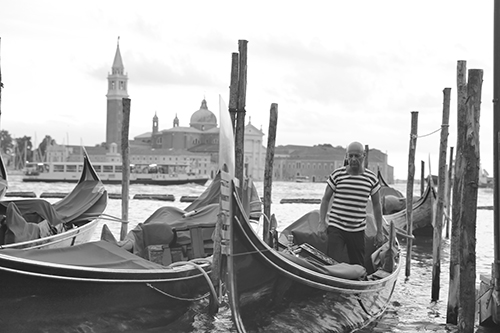
With the backdrop of the Tour de France happening in a fellow European nation not too far away, we spend our first morning in the Douro cycling through the vineyards. Moving between vines, we appreciate that not all wine regions are the same. The terraced Douro valley is particularly steep and manual. The only way to strip the vines of their grapes is by hand – no machine can traverse these terraces. We learn stories of people carrying incredibly heavy baskets up and down these hills. We first imagine a peaceful ride through the area, but we soon learn that the slopes and the loose gravel make this morning more of an adventure and less of a stroll. Luckily, the views have us stopping often to rest and take photos.

We seek adventure; however, we don’t always appreciate how much adventure we’re getting ourselves into. We sign up for a three-quarter day canyoning trip near the Douro. We’re picked up from the hotel after breakfast and driven through much of the countryside of Portugal. We arrive at the side of the river and change into our wetsuits, harnesses and helmets, which we believe is more for form than function. However, after only a couple meters into our excursion, we jump off a small cliff into the water. Given my healthy fear of heights, the adrenaline high begins here and doesn’t stop until we arrive back at our car four hours later. In-between, we repel down waterfalls, climb up waterfalls, scramble around rocks, cliff jump into river pools, and use moss-covered rocks as slides. Not for the faint of heart.
As our reward, our guide brings with him a homemade, traditional Portuguese picnic with corn bread, cheese, sausage, and homemade wine, port and grappa. Once we relax, we realize that we are very hungry, and truly enjoy our late afternoon picnic.






When traveling, all rental cars feel like a red convertible along a palm-tree lined beach road. Wind in hair, classic rock on the radio, and a glass-bottled Coca-Cola in the cup holder. A couple of the details are different in our case – the rental car is very compact and white, the music playing is by Portuguese artist Sara Tavares, and the drink is hydrating water, but the free-spirit sentiment remains.
Although only about a three hour drive from Lisbon to Porto, we find a small town along the way that had been recommended by our Vespa tour guide. Aveiro is Portugal’s version of Italy’s Venice. There are canals and gondolas and cute cafes and high-arching bridges. There seems to be a festival going on the day of our visit complete with live music and art installations. We have a perfectly toasted sandwich each, tour the town to stretch our legs, and then continue onward to Porto.
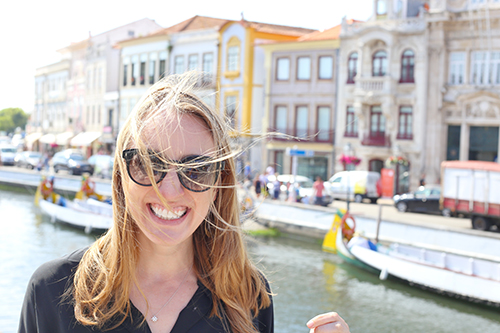
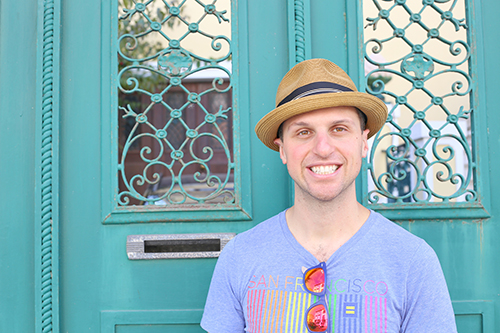
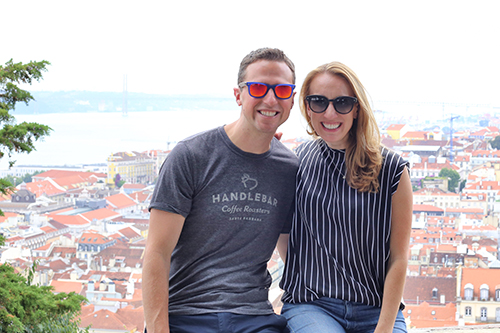
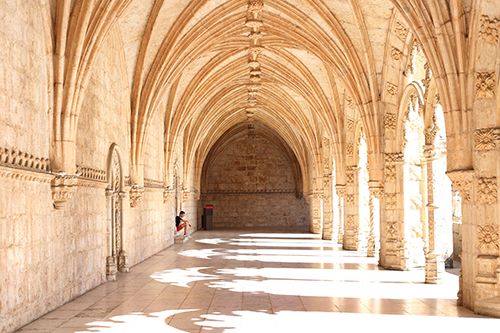
The first two mornings in Portugal include walking tours of the city full of history and local bites. Although Portugal’s history could go back as far as prehistoric times, followed by the Carthaginians and Romans, we’ll being in 1143 with their independence.
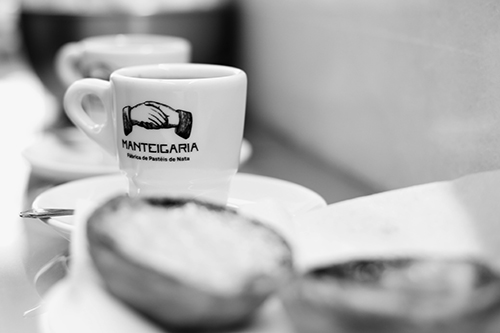
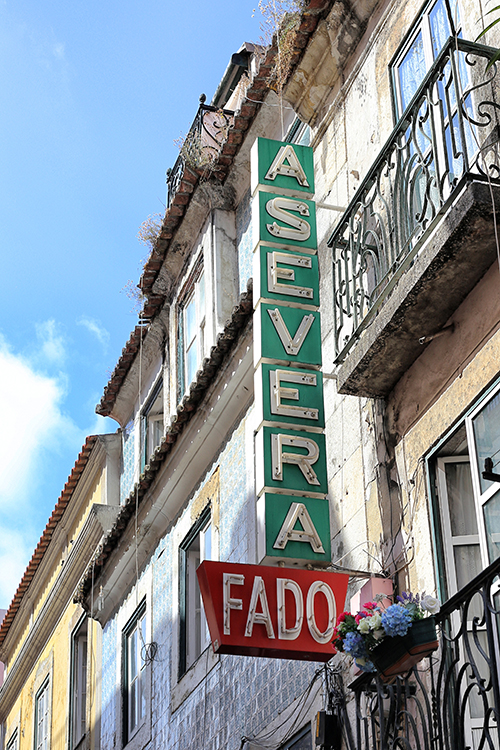
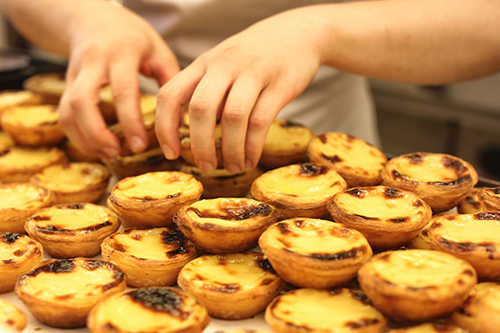
They hit a true high in the 15th and 16th centuries as one of the world’s economic, political, and military powers. During this Age of Discovery, Prince Henry the Navigator and Vasco de Gama were some of the more popular explorers with spice trade being a very lucrative career option.
All good things don’t last forever, however, and in 1755 (on my birthday), an earthquake, followed by tsunami, followed by massive fires destroyed Lisbon. I guess candle lit wooden structures that survive earthquakes aren’t also fireproof despite the huge wave of water.
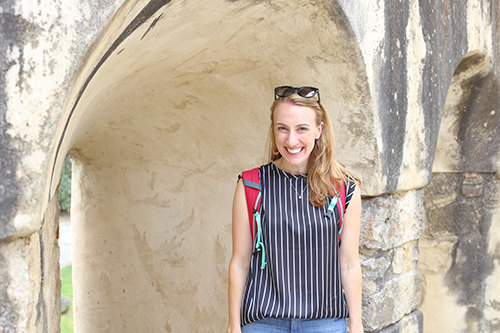
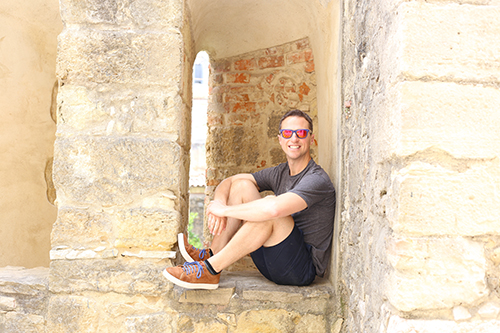
Skipping ahead to the 1900s, the Portuguese tried to establish a democratic, even if unstable, republic; however, this soon became an authoritarian regime. Eventually, democracy returned in 1974 with the Carnation Revolution. The 2013 movie Night Train to Lisbon, which we watch on the plane over, painted a pretty grim picture of this pre-revolution time.
After a rough financial crisis in 2008, Portugal has begun to rebound. The almost $100B bailout in 2011 from the IMF didn’t hurt, several economic and fiscal reforms seem to be working, and a new influx of tourism might be the icing on the cake. Portugal is among the top 20 most-visited countries in the world – 20M tourists each year!
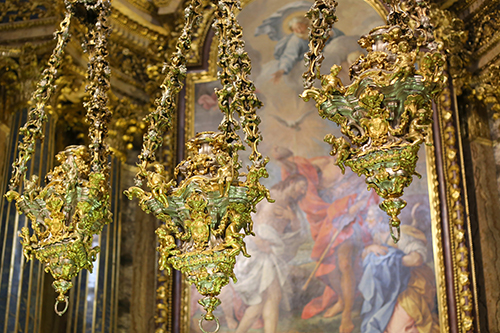

Our first honeymoon adventure is a Lindsey surprise. Without telling me where we’re headed, we venture out into Lisbon after a redeye flight, a quick bite to eat, and a short snooze. Asking lots of questions on our way through the city’s narrow, beautifully cobblestoned streets, I can’t imagine what the surprise is going to be until we arrive in front of a Vespa rental shop. I’d been talking about renting vespas the entire week leading up to the wedding in Santa Barbara, and now, half way around the world, we’re going to scooter up!
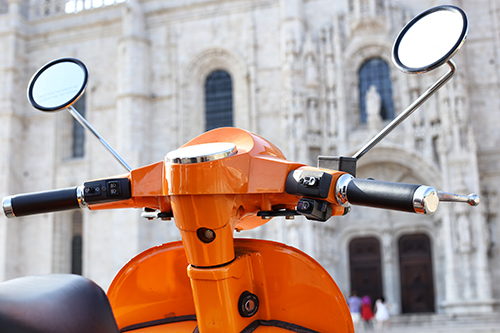


Aboard orange and white, Lindsey and I get our lay of the land via the humming, toy-like scooters made popular in Italy back in the 1940s. Balancing above cobblestones and tramcar grooves, all the while dodging pedestrians, cars, and road construction, we realize how small, beautiful, and coherent is the picturesque city of Lisbon. Meanwhile, the adrenaline that comes with doing something that could easily be considered a bit dangerous makes sure that we don’t feel any jet lag through our 4-hour tour.
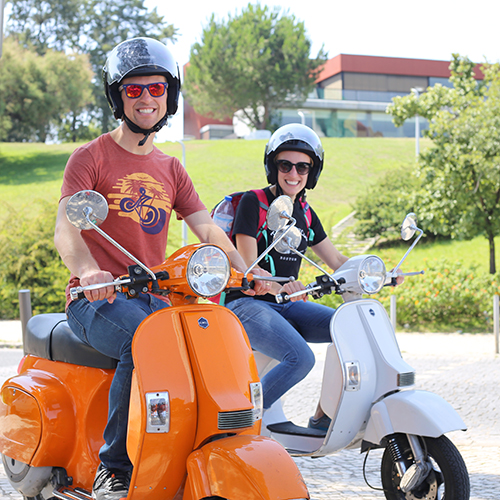
Lisbon is made of seven hills and it feels like we hit all of them stopping at each of the most expansive view points. We start with the Parque Eduardo VII, Lisbon’s landscaped central park. We stop at Miradouro das Portas do Sol and lean over the railing for a better view. And we check out the Golden Gate Bridge’s doppelgänger from Miradouro da Graça. Although we’re just getting to know the city, as long as we keep the Sao Jorge Castle in sight, we can figure out where we are and where home is.

